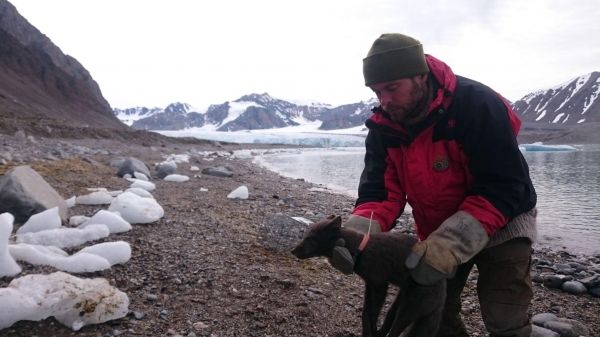When researchers from the Norwegian Polar Institute and the Norwegian Institute for Nature Research (NINA) trapped a young female Arctic fox near her den in Krossfjorden, Svalbard, on July 29, 2017, they were hoping she could offer a bit of insight into the spatial ecology of Arctic foxes. Researchers wanted to know how the animals use their environment in terms of hunting and protecting their territory during different seasons, so they outfitted the coastal or blue fox with a satellite collar and released her back into the wild. Little did the scientists know, less than a year later this fox would traverse barren polar environments, traveling more than 2,700 miles to a remote part of Canada.
Lead researcher Eva Fuglei, in collaboration with Arnaud Tarroux, tracked the fox’s epic intercontinental journey using the Argos Data Collection System (DCS) which is operated under a joint agreement between the National Oceanic and Atmospheric Administration (NOAA) and the French Space Agency, Centre National d’Etudes Spatiales (CNES). So as this fox was going about its daily life, its satellite collar was sending signals at a frequency of approximately 401.65 MHz during three-hour periods every day to different polar-orbiting satellites circling the Earth. Since the late 1970s, polar-orbiting satellites operated by NOAA have carried Argos instruments that are always “listening” for signals from these transmitters. The “messages” are then stored onboard the satellite until it passes over a ground station, explained Scott Rogerson, the Argos Data Collection System Program Manager for NOAA.
Continue reading at NOAA.
Image via Elise Strømseng/Norwegian Polar Institute.


